Commemorating the Enslaved Along Louisiana’s River Road
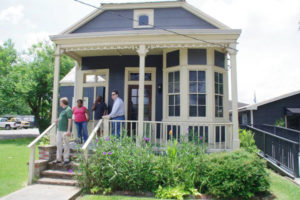
Between New Orleans and Baton Rouge, lies the remnants of antebellum sugar plantations along Louisiana’s famed River Road, named for the Mississippi River that snakes its way through southern Louisiana before spilling into the Gulf of Mexico. Many of the eighteenth-century and nineteenth-century plantation homes that still exist along this road have been preserved, and some have been transformed into museums dedicated to retelling Louisiana’s antebellum period. A few of these museums attract as many as 200,000 visitors a year (Oak Alley and Laura, A Creole Plantation, for example). Most of these plantation house museums, however, have traditionally focused their narrative presentations on the planter and his family, which necessitates that tours be spatially arranged in and around the planter’s home (The Big House).
Such narratives have traditionally marginalized, segregated, or even omitted stories of the enslaved persons whose labors made these landscapes and vast fortunes possible (Eichstedt and Small 2002). Instead of focusing on the people who toiled and effectively created these landscapes, visitors to these sites are regaled with stories of romance, wealth, scandal, and entrepreneurship, and are enchanted by elaborately costumed guides and Oak tree-lined boulevards. Narratives and artifacts tend to limit visitors’ engagement with the enslaved to the hyperlocal and the safely distant past. While their traces are to be found throughout the house and across the landscape, the onus is on visitors to seek them out.
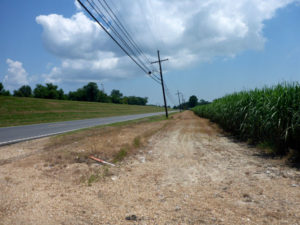
Disturbed by the absence of the enslaved from these museums’ tour narratives, a team of geographers (Derek H. Alderman, Candace Forbes Bright, David L. Butler, Perry L. Carter, Stephen P. Hanna, E. Arnold Modlin, and Amy E. Potter) received a three-year National Science Foundation grant in 2014 to research how plantations in the South present enslavement. The grant allowed the team to continue their work on plantations in the River Road region (Alderman, Butler, and Hanna 2016), as well as expand this work into Charleston, South Carolina and the James River region of Virginia in order to gain an understanding of regional variations among plantation museum landscapes and narratives. Over a decade of research by some members of our team (Butler 2001; Modlin 2011) allows us to reflect on the transformation of the River Road region alongside other plantations in the South as they struggle to engage with the legacy of slavery.
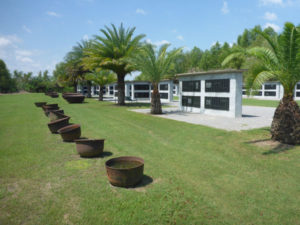
The gross neglect of the stories of the enslaved within the region has been challenged through the development of counter narrative sites. One of these early sites in the region is the River Road African American Museum located today in Donaldsonville, Louisiana. The museum, opened in 1994, is the creation of Kathe Hambrick. Kathe, a native of Louisiana, returned from time away in California and toured plantation museums along the Mississippi River in the early nineties. She was concerned with the romanticizing of plantation life and found the narratives of the enslaved omitted from plantation museums’ presentations. Upon realizing this omission Kathe determined she wanted to do something to change that. The River Road African Museum site notes that “she vowed to her herself – We must do something to tell our story…’ Later on, one night, it just came to Hambrick that the answer was a museum.” (River Road African American Museum 2017)
More recently, the region has experienced another monumental shift in its interpretation of slavery with the 2014 opening of Whitney Plantation, financed by New Orleans attorney John Cummings. Whitney Plantation in many ways is the antithesis of the traditional plantation tourist experience. Rather than center a tour on the house and the planter family, Whitney foregrounds the voices of the enslaved. The tour is an inversion of the spatial narrative with much less emphasis on the Big House.
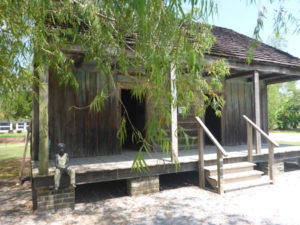
Our research team partnered with Whitney in the spring of 2015 as part of our larger project. Several of us have returned since its inaugural year to observe the changes taking place over the site.
In an effort to create a plantation tour that prioritizes the stories and voices of enslaved persons, Whitney utilizes resources like the Federal Writers’ Project of the Works Progress Administration Slave Narrative Collection (1936 to 1938). While the oral histories captured by the mostly white WPA interviewers are problematic (Carter, Butler, and Dwyer 2011), Whitney’s use of excerpts from these interviews with formerly enslaved persons, most of whom were children before emancipation, gives expression to those who help create this region and this country.
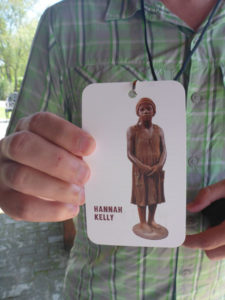
While most plantation tours begin by crediting white owners for “building” the house and grounds, Whitney turns the visitor’s attention to enslaved persons (particularly children) immediately upon entering the welcome center. Visitors receive a lanyard (to keep) featuring the words and image of a formerly enslaved child. One such example is Hannah Kelly, who was 10 years old when she was emancipated. While waiting for the 90-minute tour to start visitors can explore an exhibit on slavery, which situates the visitor within a multi-scale history that eventually connects to River Road.
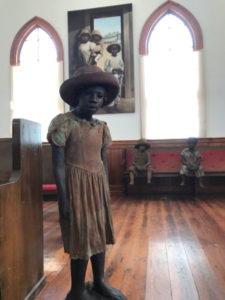
After an introduction, visitors begin their tour of the property – a tour laid out to first honor the enslaved, then to educate visitors about the everyday lives of slaves along the River Road, and, finally to connect Whitney to both the broader historical geography of slavery and the legacies of slavery haunting us today. Guides first invite visitors to enter Antioch Church where they encounter the Children of Whitney, a series of sculptures created by artist Woodrow Nash who was inspired by 19th century photographs of enslaved children. These same children appear on the lanyards visitors wear around their necks – an intentional effort by the museum to encourage visitors to connect emotionally with the enslaved.
The tour continues to the Wall of Honor, where we learn about Anna, one of 354 enslaved persons connected to the property. Anna, we are told, was just four years old when she was bought on the dock of New Orleans in 1814 (her mother died on the journey from the Chesapeake). As she grew older she was raped by her mistress’s brother. She is the black matriarch of the eminent Haydel family of New Orleans (Sybil Morial, a descendant of Anna, is the wife of Ernest Morial, New Orleans’ first African-American mayor, and mother of Marc Morial, who also served as Mayor of New Orleans).

Other stops along the tour include the Gwendolyn Hall Memorial and the Field of Angels, dedicated to the 2,200 children who were enslaved in Louisiana and died before their third birthday. The tour winds through the rows of slave cabins, two of which are original to the property, eventually making its way to the “Big House.” In contrast to most plantation tours, just a few minutes of the tour are spent inside the house and even here the narrative treats the house as a place of work for enslaved women and children. Visitors then return to the welcome center where they are asked to reflect on the tour and share their thoughts on a wall.
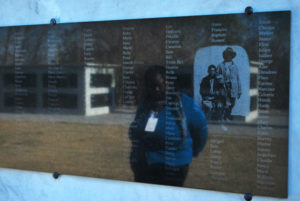
Since the racially motivated mass shooting of worshippers at Mother Emanuel Church in Charleston, South Carolina and the violent gathering of neo-Nazis, KKK, and white supremacists in Charlottesville, Virginia, the foundations of white supremacist accounts of the antebellum South are shaken as never before. New Orleans led the way in pulling down monuments glorifying Confederate “heroes” and cities and towns throughout the country are grappling with the challenge commemorating slavery and the enslaved poses to our national mythos. Southern plantation museums like those on River Road, landscapes that traditionally reproduced a Gone with the Wind version of Southern domesticity, are in many ways at the heart of this struggle.
DOI: 10.14433/2017.0019
References
Alderman, D., Butler, D. L., and Hanna, S.P. 2016. Memory, slavery, and plantation museums: the River Road Project. Journal of Heritage Tourism 11 (3): 209-218.
Butler, D. L. 2001. Whitewashing plantations: The commodification of a slave-free Antebellum South. International Journal of Hospitality & Tourism Administration 2 (3-4): 163-175.
Carter, P. L., Butler, D. L, and Dwyer, O. (2011). Defetishizing the plantation: African Americans in the memorialized South. Historical Geography 39: 128-146.
Eichstedt, J., and Small, S. 2002. Representations of slavery: Race and ideology in southern plantation museums. Washington, DC: Smithsonian Institution Press.
Modlin, E. A. 2011. Representing slavery at plantation-house museums in the U.S. South: A dynamic spatial process. Historical Geography 39: 147-173.
River Road African American Museum. 2017. https://africanamericanmuseum.org/